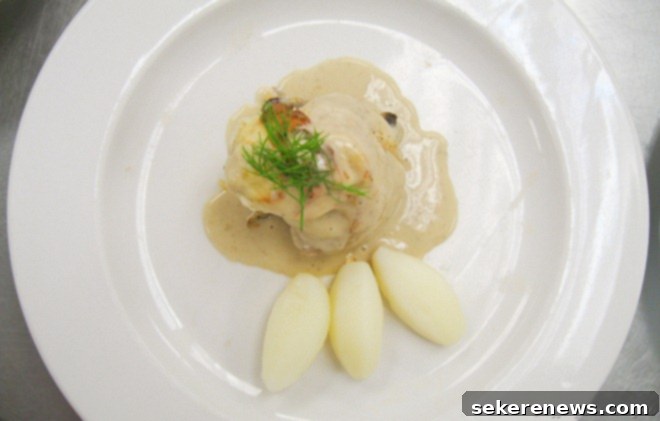Culinary School Life: Mastering Phase II with Trout Paupiettes & Butternut Squash Soup
The second day of Phase II at culinary school commenced with the first light of dawn, or perhaps even before. I found myself arriving at school at an astonishingly early 6:15 am, stepping into kitchens that were still enveloped in a profound silence, bathed only by the dim, ambient glow. One might think that such an early start, with over an hour and a half before lectures began, would lead to a dearth of tasks. However, the moment I crossed the threshold, it became unequivocally clear: there will always be more to do, more to prepare, and more ways to refine your readiness for the demanding day ahead.
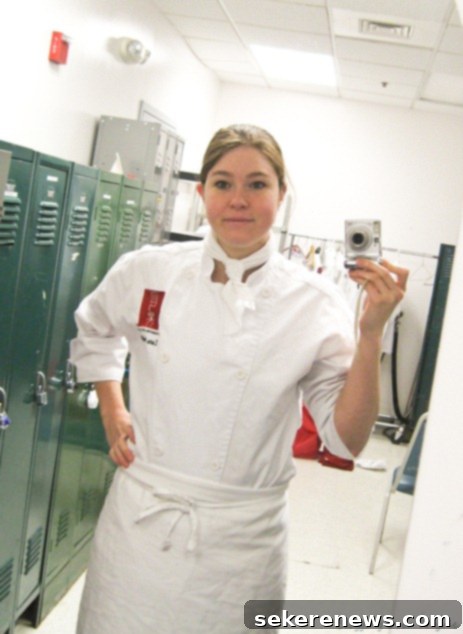
Our morning ritual is a meticulously choreographed sequence of tasks, designed to ensure a seamless and efficient culinary operation. Before we even consider our own dishes, we are responsible for an array of foundational duties. This includes setting up the chef’s demonstration station, a critical hub for learning; meticulously prepping and scaling ingredients for various dishes, a testament to the precision required in fine dining; arranging the classroom with all necessary chef’s equipment; and retrieving the day’s entire mise en place (all ingredients for the day’s menu) from the commissary. We must also diligently fill out refrigerator logs, a vital step for inventory and food safety. Only after these comprehensive preparations are complete can we finally turn our attention to our individual assignments and begin to pull together our own culinary creations.
My very first task upon entering the silent kitchen was a familiar one, though no less significant: peeling the daily mountain of garlic heads and an abundance of delicate shallots. I have no doubt that by the end of these three intense months, my hands will forever carry the fragrant, indelible scent of garlic – a badge of honor, perhaps, for a culinary student.
Shortly after my arrival, Allyson, our invaluable teaching assistant, joined me in the kitchen. She immediately assigned me the crucial task of scaling out the ingredients for the day’s highly anticipated dessert: the delightful Berry Citrus Cake. This marked a welcome change from yesterday, when dessert was not part of the menu – a situation that, thankfully, would no longer be the norm in Phase II. This assignment proved to be a stroke of luck, as it also provided me with the opportunity to scale out the ingredients for my own table’s cake. This seemingly small act saved us a surprisingly significant chunk of time once the main production began, especially considering how crowded the scaling station can become with all students simultaneously vying for space and ingredients. I truly love this strategic aspect of Phase II, and the newfound autonomy we have to streamline our workflow in this way.
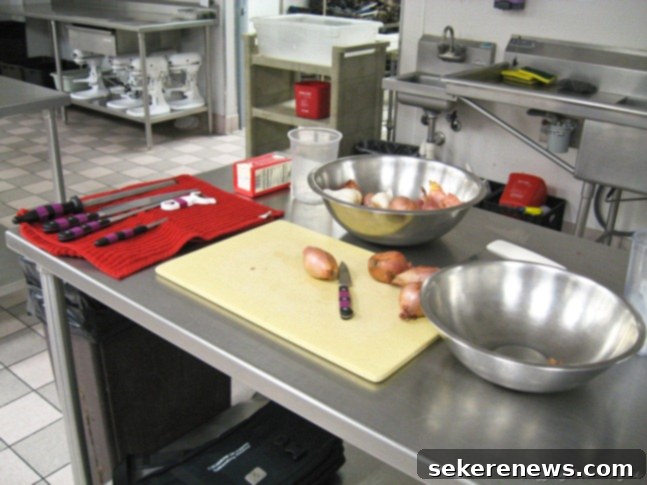
At precisely 8:00 am, the entire class converged in the demonstration classroom for Chef Patrice’s daily presentation. Today’s demo extended until approximately 10:30 am, leaving us with a tight window to execute our dishes before service began at 12:30 pm – a clear signal that we had to hustle! A considerable portion of the techniques we are now employing in Phase II are indeed concepts we’ve covered and practiced in Phase I. However, the expectations for precision, refinement, and an unwavering attention to detail are exponentially higher. This elevated standard naturally demands much more time and meticulous execution, pushing us beyond basic competence towards true culinary artistry.
Chef Patrice reiterates every single day that our paramount objective is to serve and, crucially, to delight the customer. Our mission is to produce the absolute best dish possible, consistently. He is steadfastly preparing us for the rigorous and exacting environment of a four-star restaurant, where perfection is the standard and shortcuts are simply nonexistent. During his lectures, he meticulously emphasizes not just the steps to producing a dish, but the critical nuances involved in finishing a dish to perfection. This holistic approach ensures we understand the entire culinary journey, from ingredient to plate.
To vividly illustrate his points, Chef Patrice employs an incredibly useful teaching method. As he progresses through the preparation of a sauce, soup, or other complex component, he will consistently portion small amounts into multiple deli cups at various stages – for instance, before seasoning, after initial reduction, after adding a specific ingredient, or after straining. This allows us to visually and taste-test the subtle, yet profound, differences that each step and seasoning adjustment can make. It helps us understand his decision-making process: why he chooses to reduce a liquid further, add more stock, adjust seasoning, or perform an additional straining. I have found this practical, comparative approach immensely valuable, as it’s incredibly challenging to grasp these intricate concepts merely by hearing them described. Experiencing the evolution of a dish step-by-step is truly transformative.
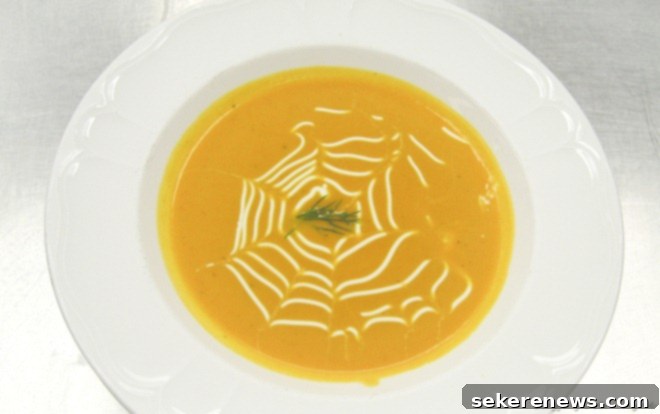
For today’s elegant meal, we began with a comforting yet refined butternut squash soup. Beyond the creamy sweetness of the squash, this particular rendition incorporated finely diced celery, carrots, and a subtle hint of Granny Smith apple, which contributed a delightful tartness and balanced sweetness. Unlike Phase I, where our spice usage was minimal (designed to keep us focused on foundational techniques without distraction), Phase II embraces a more complex flavor palette. This soup was expertly seasoned with nutmeg, cardamom, cinnamon, and ginger, creating a warm and aromatic profile. The true challenge, however, lies in knowing precisely how to integrate all these powerful components without allowing any single spice to dominate or overwhelm the others – a delicate balance that demands constant vigilance and careful tasting. After careful cooking, we passed the processed soup through a fine-mesh chinois not once, but twice, to achieve an utterly silken texture, before finishing it with a luxurious swirl of cream. Our garnish for the soup was a quenelle of sour cream, though unfortunately, it proved a bit reluctant to emerge smoothly from the squeeze bottle, as evidenced in the accompanying photograph – a minor, yet common, kitchen reality.
Our distinguished main course featured delicate paupiettes, or rolls, of fresh trout. These were artfully stuffed and then piped with a light and airy scallop mousse, creating a harmonious blend of flavors and textures. The trout paupiettes were then gently cooked in a flavorful poaching liquid. This aromatic liquid was a carefully crafted infusion of thinly sliced shallots, earthy mushroom stems, aromatic fennel scraps, fresh thyme sprigs, a bay leaf, and equal parts rich fish fumet (stock) and crisp white wine. The process involved allowing this infused liquid to come to a gentle simmer on the stovetop, after which the pan, uncovered, was carefully transferred to the oven. There, the paupiettes poached until the trout was perfectly cooked through, tender and flaky.
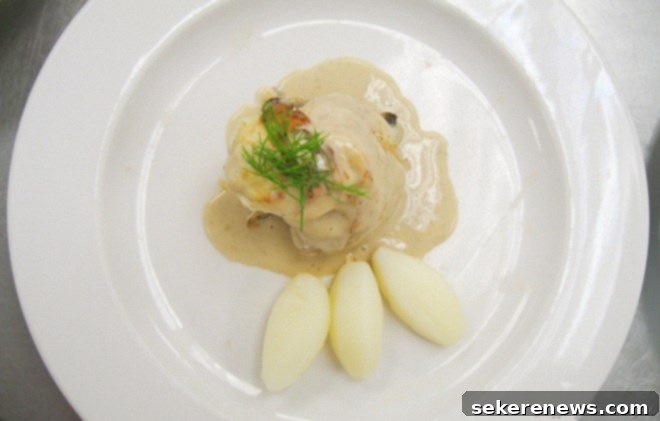
Once the trout reached its ideal doneness, we meticulously removed the delicate paupiettes from the pan. The remaining poaching liquid, now imbued with the essence of all its ingredients, was returned to the stovetop and slowly reduced until it achieved an almost syrupy consistency, intensely concentrated in flavor. This rich reduction was then strained through a chinois to ensure a perfectly smooth texture. Finally, it was finished with a touch of opulent cream, a small splash of sweet Madeira wine for added depth, and a knob of cold butter, which emulsified into the sauce, giving it a glossy sheen and velvety mouthfeel – transforming a simple poaching liquid into an exquisite sauce.
The beautifully cooked trout was presented atop a bed of delicately sautéed fennel, which had been very thinly sliced to achieve a tender, aromatic texture. Accompanying this were simple, yet elegantly prepared, boiled and tourneed potatoes. The art of tourneeing, a classic French knife skill, involves shaping vegetables into seven-sided, barrel-like forms – a seemingly simple task that requires immense practice and precision. While my partner, Jim, skillfully took charge of crafting the scallop mousse for our trout, I diligently spent my time tourneeing all the potatoes. What might sound like a monotonous task has, surprisingly, become something I genuinely don’t mind anymore. There’s a certain meditative rhythm to the repetition, and the satisfaction of producing perfectly uniform, elegant shapes is quite rewarding.
Today, our culinary creations were destined for the front of the house, where they would be served to faculty and special guests. My partner, Jim, and I had the distinct honor – and perhaps a touch of trepidation – of being assigned to deliver our trout dish directly to Chef Francois, the esteemed director of the entire culinary program. Approximately ten minutes after our delivery, a moment that felt like an eternity, Chef Francois himself appeared in the kitchen. He walked directly to our station, his presence commanding, and with a piercing gaze, simply asked, “Who made this?” I’m quite certain that both Jim and I felt a sudden surge of anxiety, as Chef Francois is famously known for being exceptionally difficult to impress. We quietly, almost hesitantly, responded, “We did.” A brief pause, and then, to our profound surprise and relief, he explained that the dish was “delicious and really well-cooked,” even proudly displaying his completely clean plate! I think we were both a bit shocked and utterly flabbergasted by this unexpected praise. It was a truly wonderful and immensely gratifying way to conclude our service, providing a much-needed confidence boost that resonated deeply.
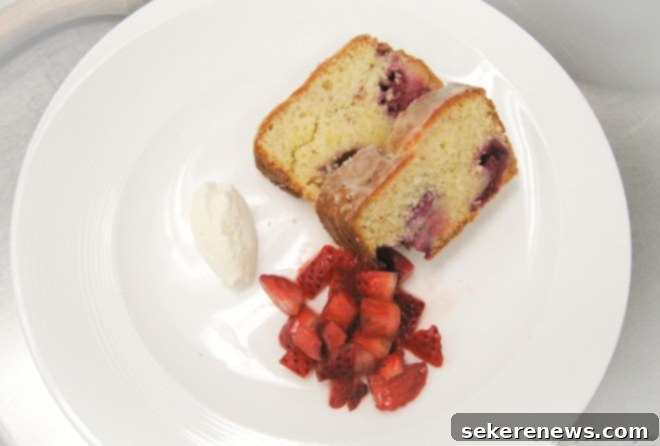
Our elaborate meal culminated with a simple yet elegant dessert: the berry & citrus cake. Similar in texture and richness to a classic pound cake, it was generously studded with fresh strawberries and raspberries, offering bursts of vibrant fruitiness. A delicate lemon glaze drizzled over the top provided a bright, tangy counterpoint, elevating its flavors. We served each slice with a perfectly sculpted quenelle of airy whipped cream and a scattering of additional fresh fruit on the side, adding both visual appeal and a refreshing finish. It was, without a doubt, quite delicious! However, for some inexplicable reason, our particular cake proved exceptionally difficult to slice without it wanting to crumble or fall apart – another small, perplexing challenge in the dynamic environment of a professional kitchen.
The introduction of the new service component in Phase II presents one of the trickiest and most demanding aspects of our daily routine. It’s a constant juggle: meticulously plating a dish to perfection, then swiftly running off to deliver it to its intended recipient in the dining area, all while racing back in time to pay crucial attention to the next dish that requires immediate plating. This multi-tasking and time pressure is relentless. Because our primary focus and priority are always the “service” plates – the four pristine dishes destined for our guests and faculty, not our own personal lunches – we often end up eating whatever leftover scraps of this and that we can gather as our main meal. This arrangement has both its upsides and downsides: on one hand, I’m certainly not consuming as many heavy, calorific meals as I might otherwise, which can be a positive for health. On the other hand, I often find myself feeling absolutely starving by the time I finally leave school in the evening. It’s a classic case of you win some, you lose some, I suppose, a constant negotiation in the demanding world of culinary training.
Since this reflection on a single day has unexpectedly blossomed into a short novel, I shall sign off here. It’s time for me to finalize typing up all my recipes for the day’s intense session and then, perhaps, finally enjoy some of those hard-earned leftovers for dinner! The journey through Phase II continues, full of learning, challenges, and delicious rewards.
